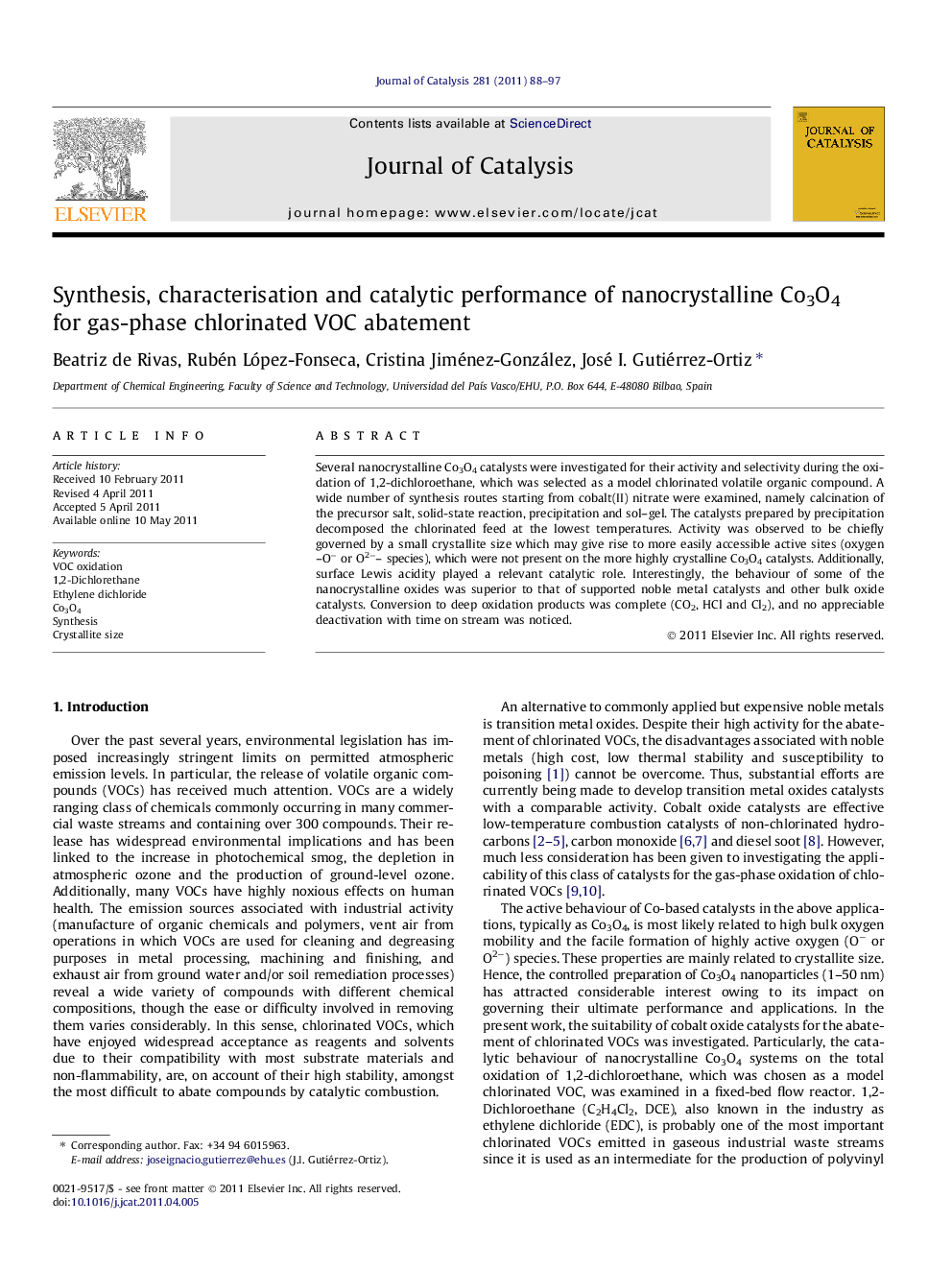| Article ID | Journal | Published Year | Pages | File Type |
|---|---|---|---|---|
| 61657 | Journal of Catalysis | 2011 | 10 Pages |
Several nanocrystalline Co3O4 catalysts were investigated for their activity and selectivity during the oxidation of 1,2-dichloroethane, which was selected as a model chlorinated volatile organic compound. A wide number of synthesis routes starting from cobalt(II) nitrate were examined, namely calcination of the precursor salt, solid-state reaction, precipitation and sol–gel. The catalysts prepared by precipitation decomposed the chlorinated feed at the lowest temperatures. Activity was observed to be chiefly governed by a small crystallite size which may give rise to more easily accessible active sites (oxygen –O− or O2−– species), which were not present on the more highly crystalline Co3O4 catalysts. Additionally, surface Lewis acidity played a relevant catalytic role. Interestingly, the behaviour of some of the nanocrystalline oxides was superior to that of supported noble metal catalysts and other bulk oxide catalysts. Conversion to deep oxidation products was complete (CO2, HCl and Cl2), and no appreciable deactivation with time on stream was noticed.
Graphical abstractSeveral nanocrystalline Co3O4 were synthesised and investigated for their activity and selectivity during the gas-phase oxidation of 1,2-dichloroethane, a model chlorinated VOC. Activity was mainly influenced by a small crystallite size which resulted in promoted low-temperature reducibility.Figure optionsDownload full-size imageDownload high-quality image (50 K)Download as PowerPoint slideHighlights► Cobalt oxides synthesised by precipitation routes resulted highly active in the oxidation of 1,2-dichloroethane. ► A reduced crystallite size promoted the low-temperature reducibility. ► Acidity also played a catalytic role. ► Conversion levels were superior to those found over noble metals and other bulk catalysts.
